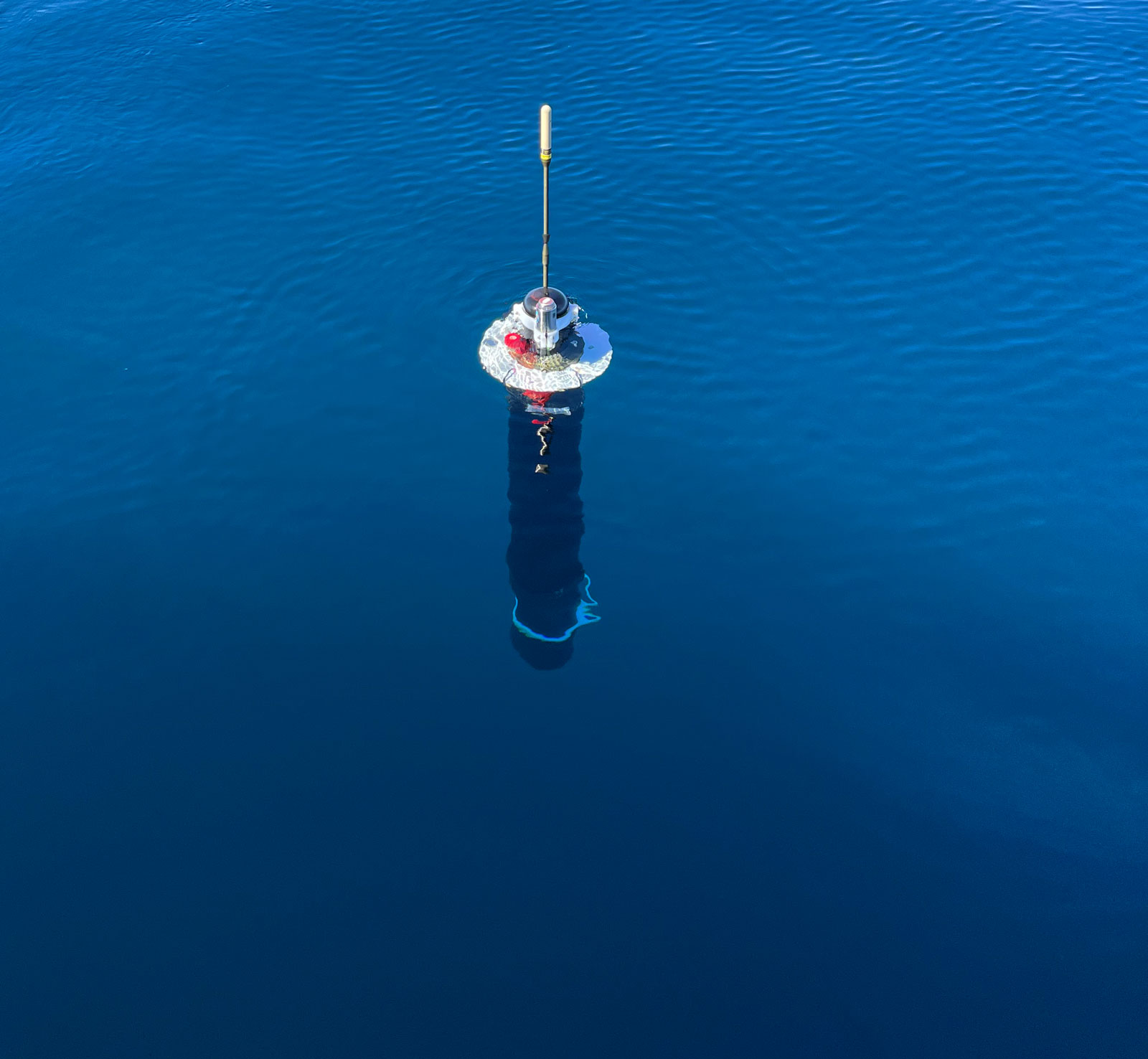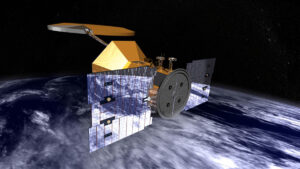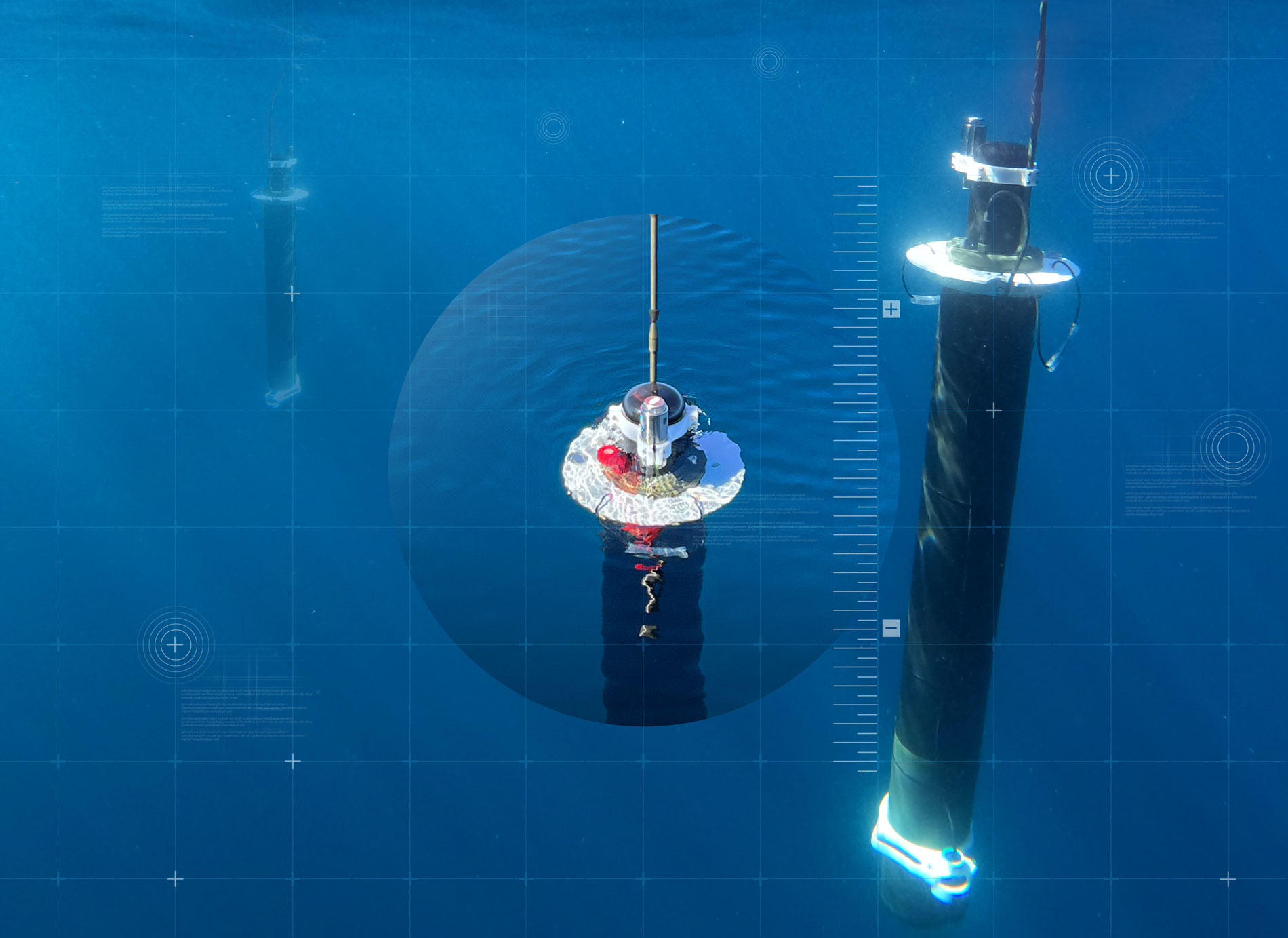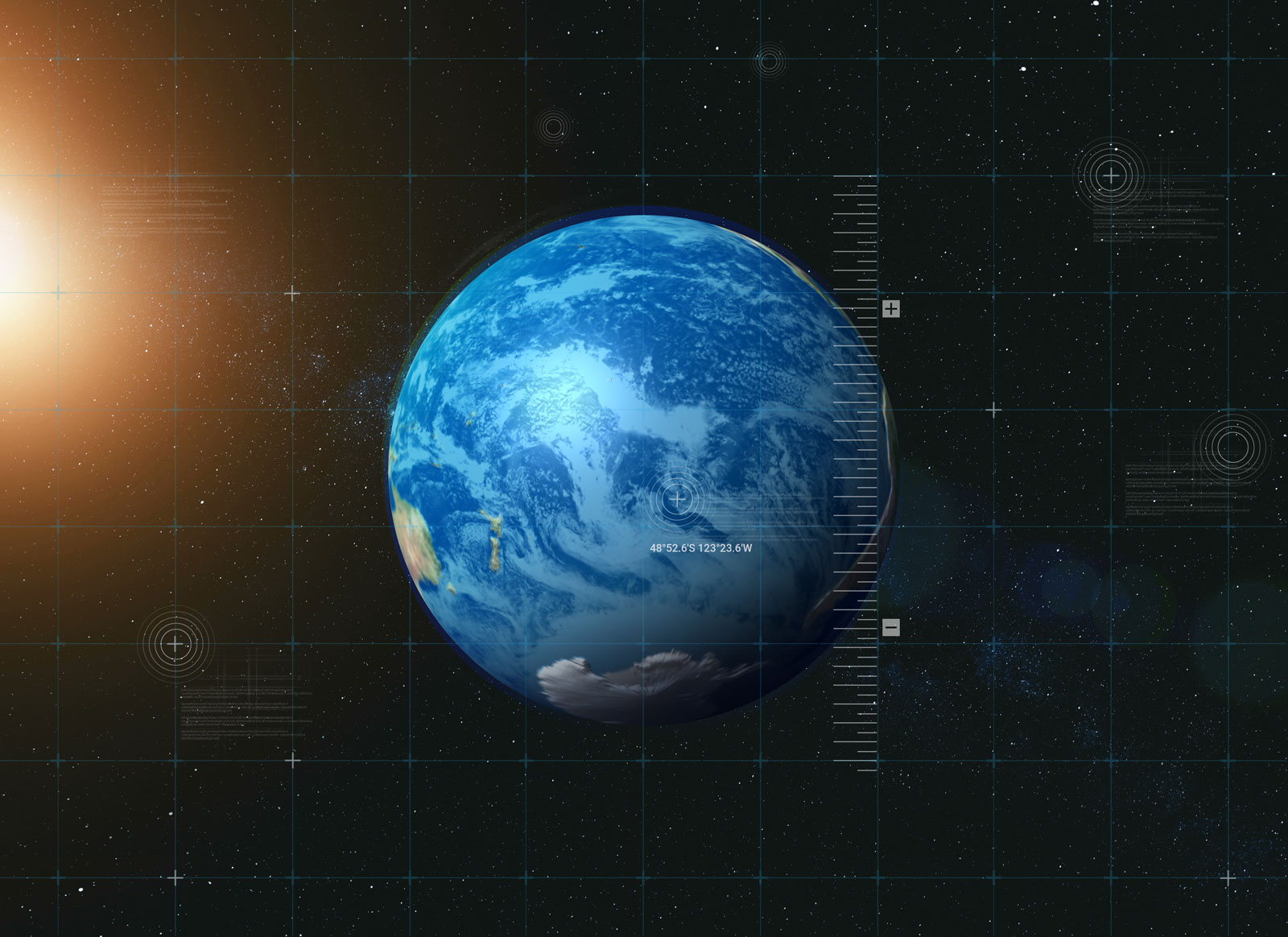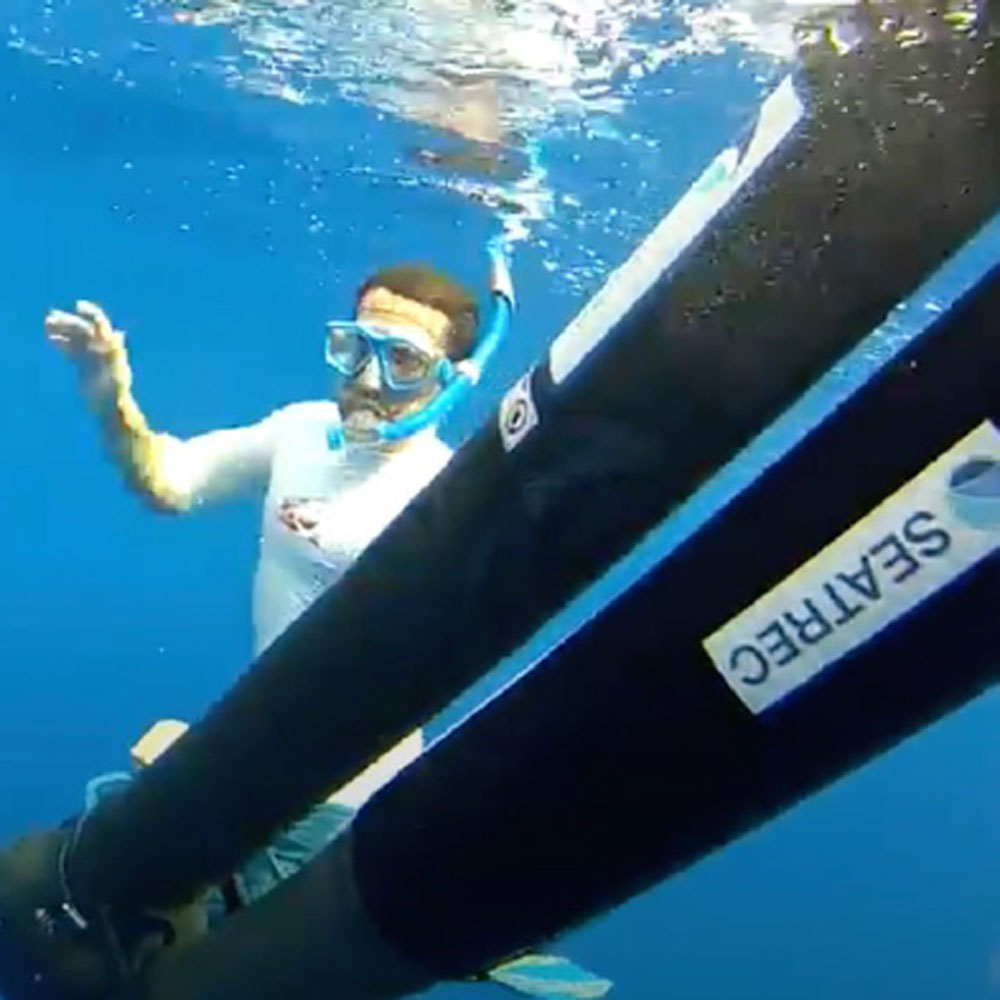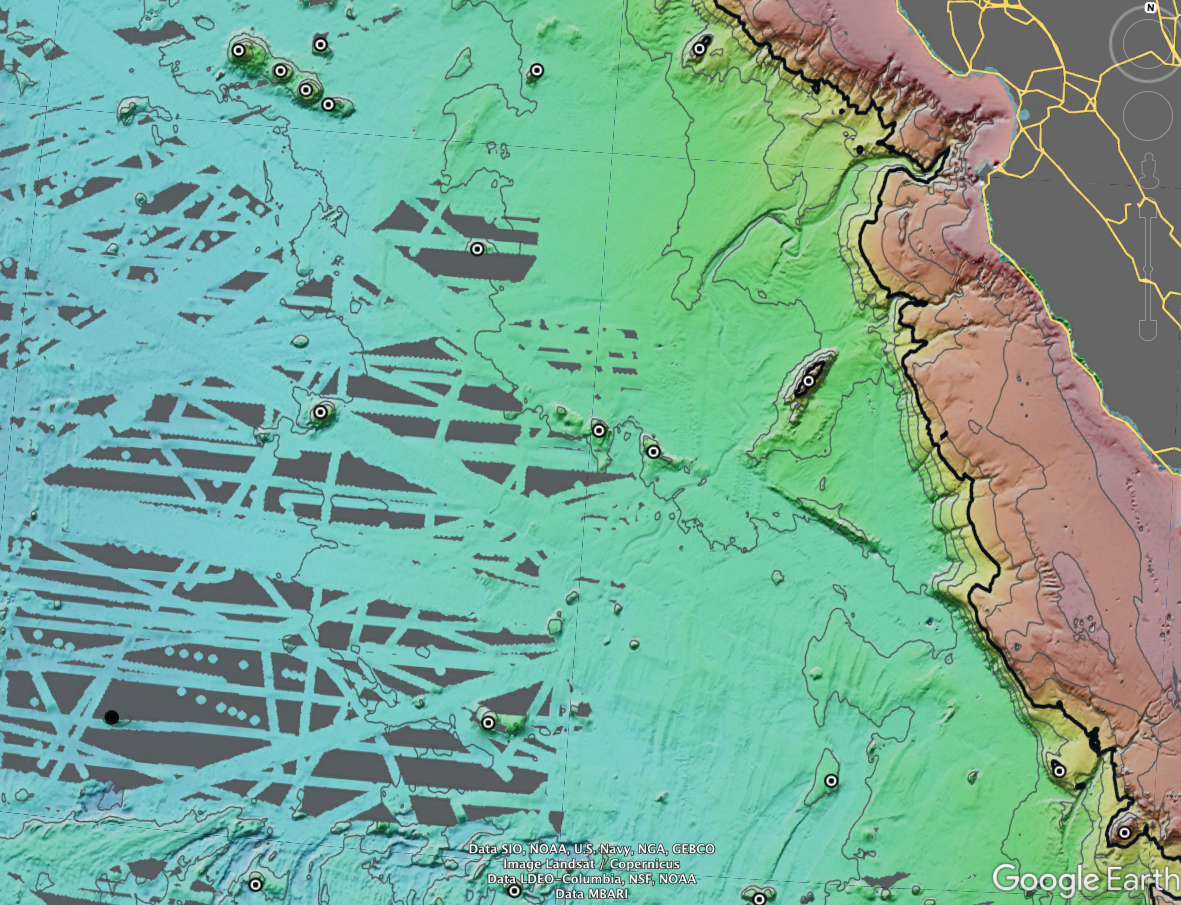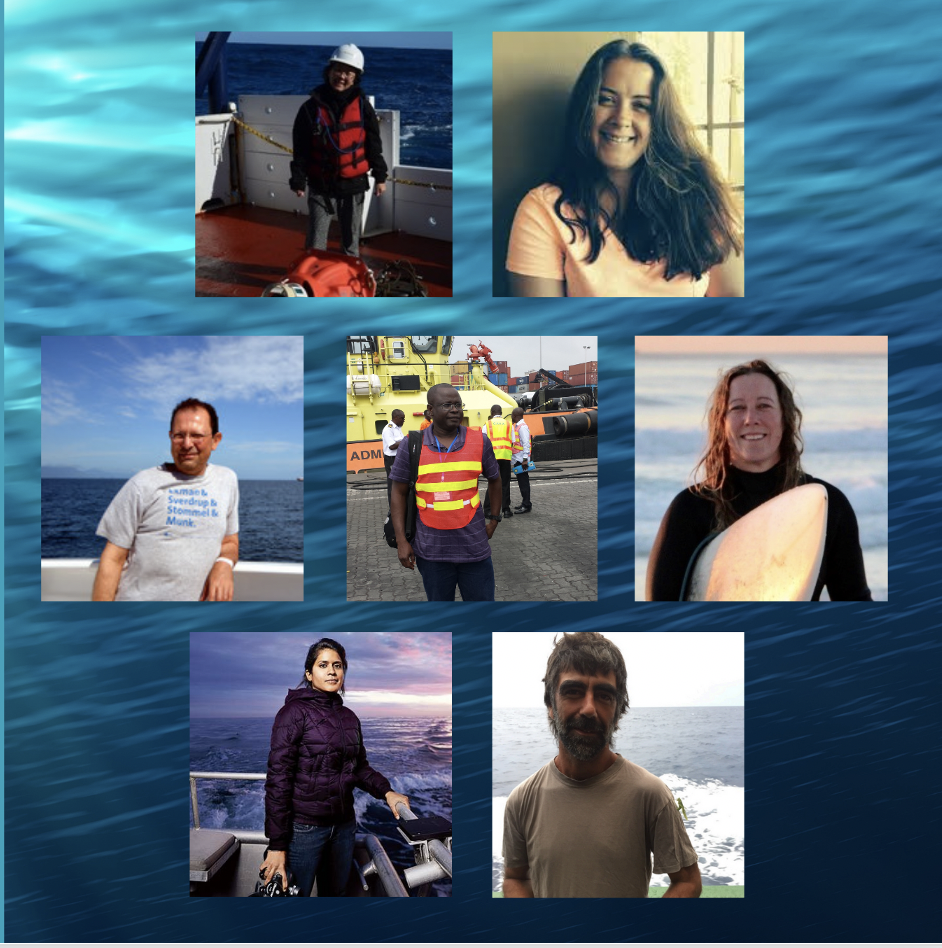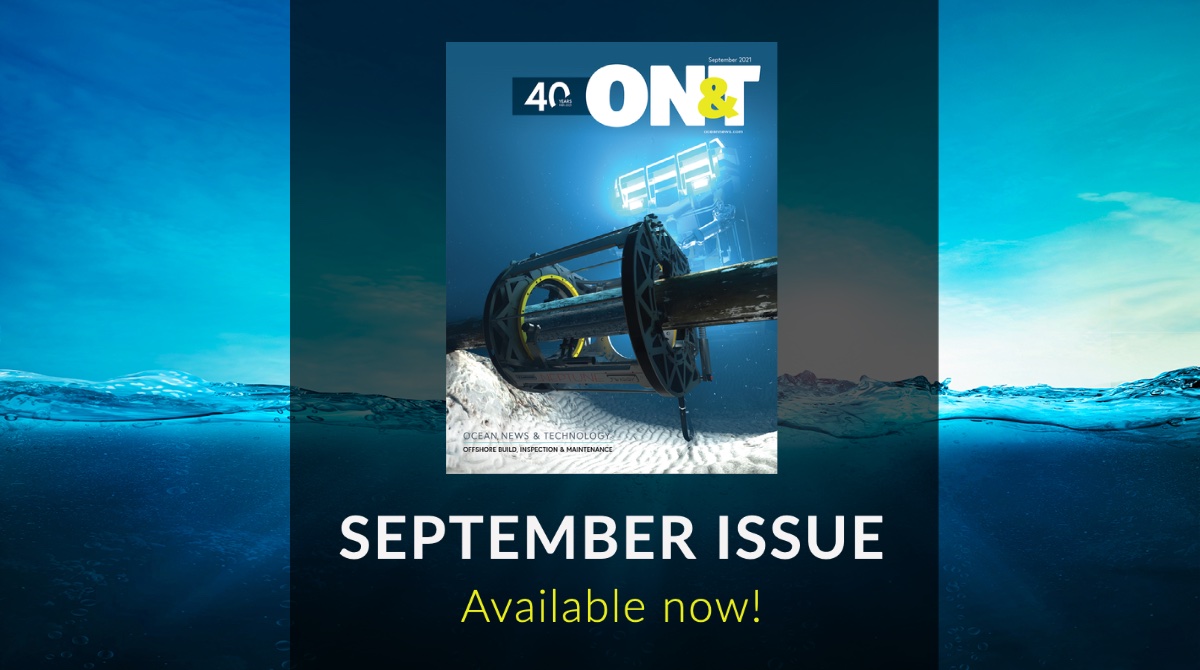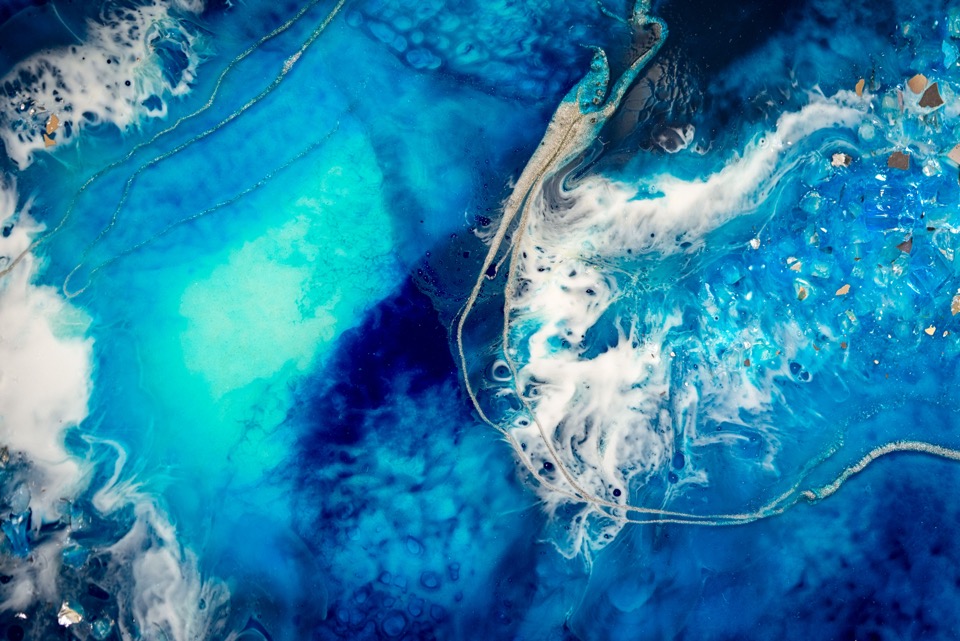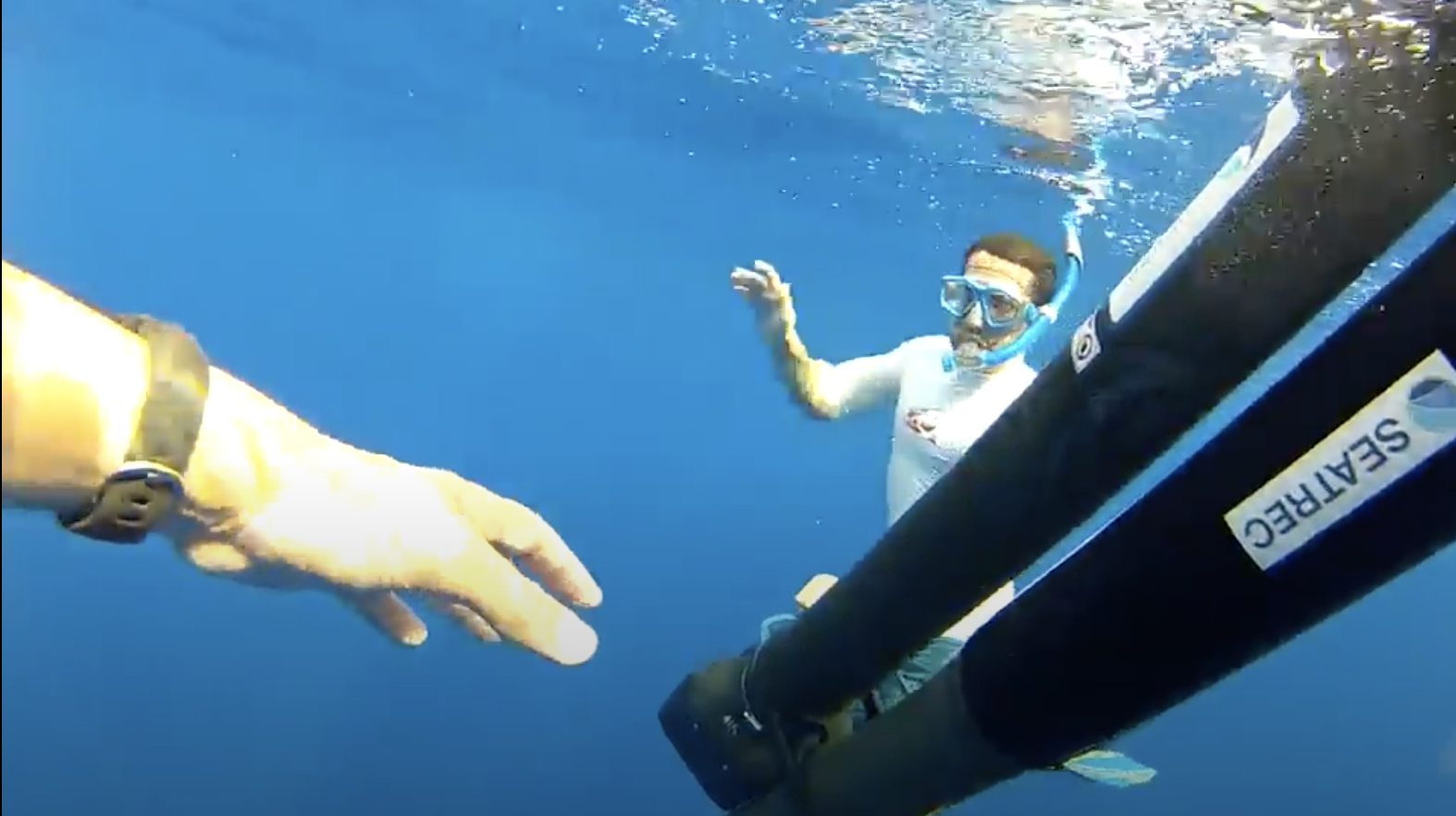Seatrec and Seabed 2030 Launch Project NEMO, the “Last Great Expedition” to Map Ocean’s Most Remote Spot
Autonomous profiling floats equipped with echosounders will map the ocean near Point Nemo – the farthest point in the ocean from land
VISTA, Calif. – WEBWIRE – Wednesday, March 23, 2022. Seatrec and The Nippon Foundation-GEBCO Seabed 2030 Project today announce Project NEMO (Novel Echosounder to Map the Ocean) via a memorandum of understanding to map the area in the ocean farthest from land near Point Nemo. The project marks one of the last great expeditions to explore the most remote and mysterious area on the planet in the spirit of efforts to chart unknown regions of the Amazon and poles during previous centuries.
“Point Nemo is particularly challenging and expensive to study and map because it’s 2,688 kilometers (1,670 miles) from the nearest land, which makes it emblematic of the difficulties that scientists face in understanding and mapping the ocean as a whole,” explains Yi Chao, Ph.D., CEO and Founder of Seatrec. “Successfully deploying technology that can accurately and inexpensively map the most remote point in the ocean will help us chart a way forward to the world’s first high-resolution map of the seafloor.”
Just over 20% of the seafloor is mapped at high-resolution leaving an area roughly equivalent to the surface of Mars uncharted. Knowledge of the ocean’s topography provides basic information for science, economy, education, management and geopolitics. Applications as diverse as climate modeling, tsunami forecasting, marine protection and management, communication cable and pipeline planning, all require reliable seafloor maps.
Seabed 2030 – a flagship program of the United Nations Decade of Ocean Science for Sustainable Development (2021-2030) – addresses that vital need through an international effort to facilitate the complete mapping of the seafloor by 2030.
“Mapping the seafloor will have a direct impact on the future of our planet, and as a result, that of humanity,” says Jamie McMichael-Philips, Seabed 2030 Project Director. “Cutting-edge technology like Project NEMO is critical to helping us achieve our goal of mapping the seafloor by 2030. ”
Experts estimate that it will cost up to $5B to map the 80% uncharted seafloor using traditional methods such as ships that burn diesel fuel and emit carbon dioxide into the atmosphere. Seatrec’s transformative technology harvests energy from the ocean temperature difference and provides a cost-effective and sustainable solution to deploy a fleet of subsea robots at a fraction of the cost of ships.
Leading Project NEMO is seafloor mapping pioneer Larry Mayer, Professor and Director of the Center for Coastal and Ocean Mapping at the University of New Hampshire.
“The clock is ticking on the international community’s unprecedented effort to map the seafloor so we can understand and protect the ocean’s resources,” emphasizes Mayer. “Next-generation ocean mapping technologies – like Seatrec’s – are vital to getting the data we need in a scalable and cost-effective way.”
About Seatrec
Seatrec designs and manufactures energy harvesting systems that generate electricity from naturally occurring temperature differences in ocean waters. This renewable energy can be used to power deep water oceanographic research equipment such as floats, gliders, and autonomous underwater vehicles, resulting in the most scalable, cost-effective deep ocean data collection possible. Incorporated in 2016 by CEO, Dr. Yi Chao, Seatrec’s technology originated at NASA Jet Propulsion Laboratory, California Institute of Technology, to provide clean power for remote off-grid locations. The company is headquartered in Vista, CA. Visit us at www.seatrec.com and @seatrecinc.
About The Nippon Foundation-GEBCO Seabed 2030 Project
Seabed 2030 is a collaborative project between The Nippon Foundation of Japan and the General Bathymetric Chart of the Oceans (GEBCO). It aims to bring together all available bathymetric data to produce the definitive map of the world ocean floor by 2030 and make it available to all. The project was launched at the United Nations (UN) Ocean Conference in June 2017 and is aligned with the UN’s Sustainable Development Goal #14 to conserve and sustainably use the oceans, seas and marine resources. For information visit: seabed2030.org.
Media contacts
Sean Yokomizo
Seatrec
sean.yokomizo@seatrec.com
+1 925.878.1200
Pegah Souri
Seabed 2030
pegah@raittorr.co.uk
+44 (0)7951 581707
###
Seatrec Launches Initiative to Boost Cost-Effective Seafloor Mapping
Seatrec Launches Initiative to Boost Cost-Effective Seafloor Mapping by Developing Autonomous Echosounder Float Powered by Ocean’s Temperature Differences
Project funded by Schmidt Marine Technology Partners brings seafloor mapping dream team together with transformative and sustainable tech to map the 80% of ocean bottom still uncharted at high-resolution
VISTA, Calif. (Oct. 27, 2021) – Seatrec, a renewable energy company that harvests energy from temperature differences in the environment, today launches a project to develop an autonomous echosounder float powered by clean, sustainable energy. With funding from Schmidt Marine Technology Partners, a program of the Schmidt Family Foundation founded by Wendy and Eric Schmidt, Seatrec will provide the float and power system while New Hampshire-based Airmar Technology Corporation, in collaboration with Innomar Technologie GmbH based in Germany, will provide the active acoustic echosounder for high-resolution mapping.
“Eighty percent of the seafloor has not been mapped at high-resolution - an area roughly twice the size of Mars - and covering an area that large using ships and today’s state-of-the-art autonomous platforms will cost billions of dollars,” explains Yi Chao, CEO and Founder of Seatrec. “This initiative brings together a seafloor mapping dream team with the transformative technology needed to create a sustainably powered method for mapping the ocean floor for a fraction of the cost compared to ships.”
The project is led by Larry Mayer, a professor and Director of the Center for Coastal and Ocean Mapping at the University of New Hampshire.
“The ocean’s resources are critical to supporting and sustaining all life on Earth and it’s shocking how little we know about something as fundamental as the seafloor,” observes Mayer. “It’s imperative that we develop the next generation of ocean mapping technologies to support the international community’s unprecedented effort to finally map the seafloor at high-resolution -- there’s no time to lose.”
Indeed, the world is racing to map the seafloor to help manage living resources, improve marine navigation, and guide infrastructure construction, as well as better defining the impacts of current and future human activity. The Nippon Foundation-GEBCO Seabed 2030 Project is a first-of-its-kind international effort to facilitate the complete mapping of the seafloor by 2030 and is a major contribution to the UN Decade of Ocean Science for Sustainable Development (2021-2030).
However, two critical obstacles stand in the way of success: energy and cost.
Mapping the 80% gaps of the global seafloor will cost an estimated $3B using ships burning diesel fuel and emitting carbon dioxide into the atmosphere. A robotic revolution resulted in the growing use of autonomous vehicles to reduce the cost of using ships and the associated carbon footprint. Seatrec’s technology to harvest energy from the ocean thermal energy is transformative and provides a cost-effective and sustainable solution to deploy a fleet of subsea robots at a fraction of the cost of ships.
“Mapping the seafloor provides fundamental and critical data we need to protect the health of our oceans but such a massive undertaking requires innovative and sustainable solutions from the best and brightest,” points out Erika Montague, the Chief Technologist of the Schmidt Marine Technology Partners. “This initiative provides a path forward towards better understanding and protection of our ocean.”
About Seatrec
Seatrec designs and manufactures energy harvesting systems that generate electricity from naturally occurring temperature differences in ocean waters. This renewable energy can be used to power deep water oceanographic research equipment such as floats, gliders, and Autonomous Underwater Vehicles (AUVs), resulting in the most scalable, cost-effective deep ocean data collection possible. Incorporated in 2016 by CEO, Dr. Yi Chao, Seatrec’s technology originated at NASA Jet Propulsion Laboratory, California Institute of Technology, to provide clean power for remote off-grid locations. The company is headquartered in Vista, CA. Visit us at www.seatrec.com and @seatrecinc.
Media contact
Sean Yokomizo
+1 925.878.1200
Seatrec Launches Project FIND
oceans
Seatrec Launches Project FIND to Provide Underrepresented Oceanographers with World-Class, Sustainable Technology to Help Save the Ocean
Five teams of oceanographers from underrepresented communities will each receive a $75,000 Navis scientific float with SL1 energy harvesting modules + free machine learning from H2O.ai to boost their research
VISTA, Calif. (Sept. 23, 2021) – Seatrec, a renewable energy company that harvests energy from temperature differences in the environment, today launches Project FIND – Float Innovation & New Discovery – to promote equity in ocean research by providing underrepresented oceanographers with world-class, sustainable technology.
“The ocean is in crisis and we cannot afford to have the world’s best and brightest on the sidelines because they lack access to data and technology,” insists Yi Chao, Seatrec’s Founder and CEO. “We must commit to building scientific capacity and infrastructure in every continent because every coastline has a stake in the ocean’s future.”
The program is also sponsored by visionary data science and AI cloud platform provider, H2O.ai, providing five teams of oceanographers from underrepresented communities each with free access to machine-learning tools to process data from a Navis-SL1 scientific float powered by SL1 energy harvesting modules (a $75,000 value). The oceanographers were selected based on their contributions to the global understanding and preservation of the ocean.
“Ocean science is data science,” said Sri Ambati, CEO and founder of H2O.ai. “Democratizing ocean science by providing underrepresented communities with access to world-class research tools is a critical step to preserving our oceans, and ultimately unlocking the mysteries of all life. We are honored to support this important work and provide H2O.ai’s AI cloud platform for its prime purpose – AI for good.”
The oceanographers selected for Project FIND are:
Asha De Vos, a Sri Lankan scientist and National Geographic Explorer best known for her studies of blue whales.
Joseph K. Ansong, a senior math lecturer at the University of Ghana who specializes in understanding the energetics of regional/global oceanic processes.
Miguel Tenreiro, a researcher based in Mexico studying the Gulf of Mexico circulation and its impact on weather and hurricanes.
Olga Sato and Paulo Polito, lead a team from Brazil studying the South Atlantic Meridional Overturning Circulation as an indicator for changes in climate.
Tamaryn Morris and Juliet Hermes, lead a South African team focused on the Mozambique Channel and the Agulhas Current.
Seatrec’s energy harvesting system uses solid-to-liquid (SL) phase change materials to convert temperature differences into electricity in order to power profiling floats.
The Navis Autonomous Profiling Float, built by Sea-Bird Scientific, is widely used – including by Argo, the international ocean-monitoring network – for taking scientific measurements such as temperature and salinity down to 1,000 meters. The selected FIND investigators will receive a Navis float integrated with two of Seatrec’s SL1 modules that power the float using clean, renewable energy harvested from the ocean’s temperature differences.
Investigators will also have free support and access to H2O.ai’s award-winning Driverless AI platform that uses AI to deliver expert data science easier, faster, and cheaper than traditional applications.
Project FIND seeks to demonstrate the potential of SL energy harvesting to enable discovery, introduce a renewable paradigm for float operations, and provide state-of-the-art oceanographic instruments to underrepresented oceanographers.
About Seatrec
Seatrec designs and manufactures energy harvesting systems that generate electricity from naturally occurring temperature differences in ocean waters. This renewable energy can be used to power deep water oceanographic research equipment such as floats, gliders, and Autonomous Underwater Vehicles (AUVs), resulting in the most scalable, cost-effective deep ocean data collection possible. Incorporated in 2016 by CEO, Dr. Yi Chao, Seatrec’s technology originated at NASA Jet Propulsion Laboratory, California Institute of Technology, to provide clean power for remote off-grid locations. The company is headquartered in Vista, CA. Visit us at www.seatrec.com and @seatrecinc.
Media contact
Sean Yokomizo
sean@seatrec.com
+1 925.878.1200
###
Seatrec Selected as Finalist in General Excellence by Fast Company’s 2021 World Changing Ideas Awards
Seatrec Selected as Finalist in General Excellence by Fast Company’s 2021 World Changing Ideas Awards
Company’s SL1 Thermal Energy Harvesting System that generates electricity from the ocean’s natural temperature difference honored for pursuing innovation for the good of society and the planet
VISTA, Calif. – WEBWIRE – Tuesday, May 4, 2021. Seatrec, the renewable energy company that harvests energy from temperature differences in the environment, today announces the selection of its SL1 Thermal Energy Harvesting System as a finalist for Fast Company’s 2021 World Changing Ideas Awards in the category of General Excellence. The SL1 also received honorable mention in the energy category. The awards honor the businesses, policies, projects, and concepts that are actively engaged and deeply committed to pursuing innovation when it comes to solving health and climate crises, social injustice, or economic inequality.
Seatrec is the first company to produce a portable power system that harvests energy from naturally occurring temperature differentials. Its patented thermal energy harvesting technology provides infinite power and is currently used to operate oceanographic equipment, including autonomous profiling floats and underwater gliders.
Many of the robotic platforms used by scientists, like autonomous profiling floats, are treated as disposable because retrieving them from far out at sea is expensive. That practice is not only a waste of resources but the batteries that power those devices can pollute the ocean by leaking toxic materials. Seatrec’s technology allows researchers to extend the life of their equipment, power more sensors, and collect data faster at a reduced cost and in an environmentally friendly manner.
“Protecting the ocean’s health is vital to life on Earth but understanding it is extraordinarily difficult without reliable, renewable energy to power sensors and the robotic platforms that carry them,” explains Dr. Yi Chao, founder and CEO of Seatrec. “The technology behind the SL1 is critical to innovating beyond current limited battery performance and providing clean power for research and key applications in the Blue Economy like aquaculture and maritime transportation.”
Seatrec is exploring a host of applications for its clean power technology to help drive the expansion of the Blue Economy from collecting data to improve hurricane forecasting, mapping the seafloor, developing carbon capture methods, aquaculture, and improving navigational routes for shipping to reduce bunker fuel.
The Blue Economy - sustainable, ocean-centric commerce - is expected to generate more than $3T in global economic impact and support more than 40M jobs around the world, according to the Organization for Economic Co-operation and Development (OECD). Aquaculture alone is projected to grow into a $274B per year market by 2025.
Now in its fifth year, Fast Company’s World Changing Ideas Awards honors innovations selected by a panel of eminent editors and reporters. This year the panel selected winners and finalists from a pool of more than 4,000 entries across transportation, education, food, politics, technology, and more. Plus, several new categories were added, including Pandemic Response, Urban Design, and Architecture. The 2021 awards feature entries from across the globe, from Brazil to Denmark to Vietnam.
Showcasing some of the world’s most inventive entrepreneurs and companies tackling exigent global challenges, Fast Company’s Summer 2021 issue (on newsstands May 10) highlights, among others, a lifesaving bassinet; the world’s largest carbon sink, thanks to carbon-eating concrete; 3D-printed schools; an at-home COVID-19 testing kit; a mobile voting app; and the world’s cleanest milk.
“There is no question our society and planet are facing deeply troubling times. So, it’s important to recognize organizations that are using their ingenuity, impact, design, scalability, and passion to solve these problems,” says Stephanie Mehta, editor-in-chief of Fast Company. “Our journalists, under the leadership of senior editor Morgan Clendaniel, have discovered some of the most groundbreaking projects that have launched since the start of 2020.”
About Seatrec
Seatrec designs and manufactures energy harvesting systems that generate electricity from naturally occurring temperature differences in ocean waters. This renewable energy can be used to power deep water oceanographic research equipment such as floats, gliders, and Autonomous Underwater Vehicles (AUVs), resulting in the most scalable, cost-effective deep ocean data collection possible. Incorporated in 2016 by CEO, Dr. Yi Chao, Seatrec’s technology originated at NASA Jet Propulsion Laboratory, California Institute of Technology, to provide clean power for remote off-grid locations. The company is headquartered in Vista, CA. Visit us at www.seatrec.com and @seatrecinc.
About the World Changing Ideas Awards
World Changing Ideas is one of Fast Company’s major annual awards programs and is focused on social good, seeking to elevate finished products and brave concepts that make the world better. A panel of judges from across sectors choose winners, finalists, and honorable mentions based on feasibility and the potential for impact. With the goals of awarding ingenuity and fostering innovation, Fast Company draws attention to ideas with great potential and helps them expand their reach to inspire more people to start working on solving the problems that affect us all.
Media contact
Sean Yokomizo
On behalf of Seatrec
seanyokomizo@gmail.com
+1 925.878.1200
World Economic Forum Highlights Seatrec in Video
The World Economic Forum published a video that features Seatrec and explores the potential of our thermal-powered floats to help us better understand and utilize our oceans.
The oceans make up two-thirds of our planet and underpin our food and sustenance, medicine and vaccines, transport and commerce, and the global climate. And yet, as the video shows, our oceans are poorly understood; we currently have a clearer picture of Mars than we do of the seafloor.
What stands between our ability to measure, understand, and protect our oceans is energy – and Seatrec’s technology can generate infinite, renewable power from the ocean itself.
Through Seatrec’s ocean-based sustainable energy, we can monitor the climate, improve hurricane forecasts, optimize shipping routes, and so much more. Seatrec is currently working with oceanographers, government entities, and private companies across the blue tech ecosystem to map the ocean, conserve marine ecosystems, and unlock the potential of the blue economy.
Watch the full video here.

